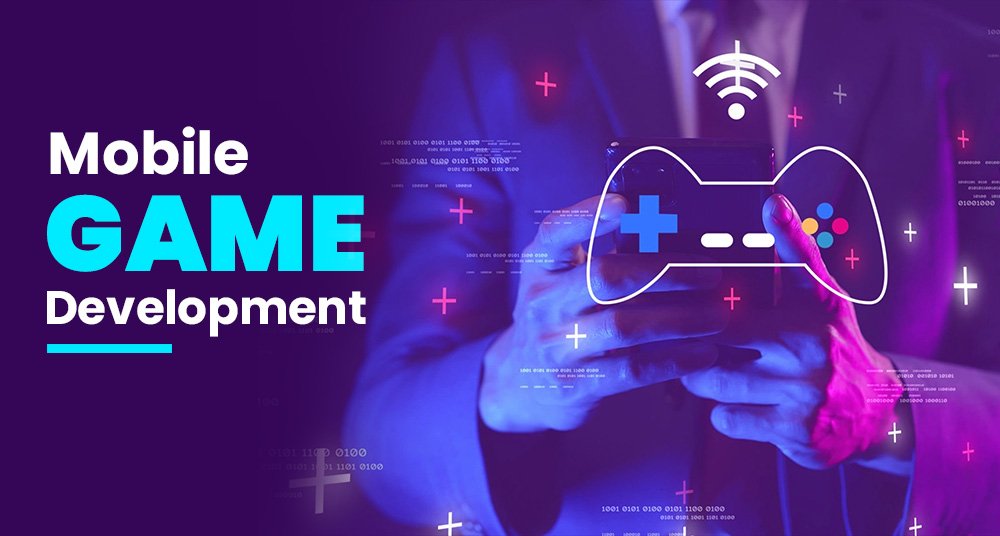Creating a game from concept to release is an exciting journey that combines creativity, design, coding, and business strategy. Whether you’re an aspiring indie developer or working with a mobile game development company, understanding the process helps you build engaging and successful games.
In this guide, we’ll break down every step of the game development process, explore the tools you’ll need, and share practical tips to help you succeed in the competitive gaming industry.
1. Understanding the Game Development Process
Game development involves several key stages: concept, design, development, testing, and launch. Each stage plays an essential role in bringing your idea to life.
a. Concept and Ideation
Every game starts with an idea. It could be a simple puzzle mechanic or a vast open-world adventure. During the concept stage:
-
Define the core gameplay loop – what the player does repeatedly.
-
Identify your target audience (casual players, hardcore gamers, etc.).
-
Research your competition to see what’s already working in the market.
-
Create a short game design document (GDD) summarizing the concept, genre, mechanics, and story.
b. Game Design
Game design turns your idea into a playable plan. It involves creating levels, characters, assets, and systems that make the experience fun and immersive.
Key design tasks include:
-
Storyboarding and narrative structure
-
Level and world design
-
Character and asset creation
-
Balancing difficulty and progression
Modern tools like Unity, Unreal Engine, and Godot make prototyping and design more accessible, even for beginners.
2. Choosing the Right Tools and Game Engine
Your choice of tools can define the success and scalability of your project. Popular engines like Unity and Unreal Engine offer built-in physics, rendering, and scripting systems, saving months of development time.
Recommended Game Engines
| Engine | Ideal For | Programming Language |
|---|---|---|
| Unity | 2D & 3D mobile/indie games | C# |
| Unreal Engine | High-quality 3D and AAA games | C++ / Blueprints |
| Godot | Lightweight 2D/3D games | GDScript / C# |
| Construct / GameMaker | Beginners and 2D creators | Visual scripting |
If your goal is to enter the mobile game development market, Unity is a great starting point because of its strong support for iOS and Android publishing.
3. Learning the Essential Skills
Creating a game requires multiple skill sets. Even if you’re not doing it all yourself, knowing the basics will help you coordinate better with your team.
a. Programming
Game logic, physics, and AI all depend on coding. You’ll need to understand:
-
Scripting languages (C#, C++, or Python)
-
Game physics and mechanics
-
Memory optimization and performance tuning
b. Art and Animation
Games are visual experiences. Learn to use:
-
Blender or Maya for 3D modeling
-
Photoshop or GIMP for textures and 2D art
-
Spine or After Effects for animations
c. Sound Design
Immersive audio enhances gameplay. Tools like FMOD or Audacity help create sound effects and background music.
d. Testing and Debugging
Regular playtesting ensures your game is fun, balanced, and free of bugs. Use feedback from players to improve gameplay mechanics and fix performance issues.
4. Building a Prototype
A prototype is a simplified version of your game that demonstrates the main mechanics. It helps you:
-
Validate your concept early
-
Gather player feedback
-
Identify technical challenges
Focus on the core loop — the main activity that keeps players engaged (e.g., shooting, collecting, exploring). Keep the prototype small and functional before adding complex features or visuals.
5. Developing Your Game
Once your prototype feels solid, you can move on to full development. This stage involves:
-
Writing efficient game logic
-
Building levels and environments
-
Adding visual effects and animations
-
Implementing UI/UX design
-
Integrating monetization or in-app purchases (for mobile games)
Collaborating with a mobile game development company or outsourcing specialized tasks (like 3D modeling or sound design) can help you accelerate production while maintaining quality.
6. Testing and Quality Assurance (QA)
Testing is one of the most overlooked yet crucial parts of game development. A buggy game can ruin even the best ideas. There are several types of testing:
-
Functional testing – ensures the game runs without crashes or logic errors.
-
Performance testing – optimizes frame rates and load times.
-
User testing – gathers player feedback on difficulty, enjoyment, and controls.
QA teams also test on multiple devices, especially in mobile game development, where performance can vary drastically between Android and iOS models.
7. Publishing Your Game
Once your game is ready, it’s time to release it to the world. Depending on your platform, the publishing process varies.
For Mobile Games:
-
Prepare your app for submission to Google Play and Apple App Store.
-
Follow platform guidelines for content rating, permissions, and monetization.
-
Create compelling app store visuals — icons, screenshots, and videos.
For PC or Console Games:
-
Publish on platforms like Steam, Epic Games Store, or itch.io.
-
Optimize your game for different hardware configurations.
8. Marketing and Monetization
A great game won’t sell itself. You need a solid marketing plan to reach players and generate buzz.
a. Marketing Strategies
-
Build a community on Discord, Reddit, or X (Twitter).
-
Post development updates and teasers regularly.
-
Collaborate with influencers and streamers.
-
Launch a press kit and trailer before release.
b. Monetization Models
Choose a model that aligns with your target audience:
-
Free-to-play with ads or in-app purchases
-
Premium (one-time purchase)
-
Subscription or DLC content
Professional mobile game development services often include marketing and user acquisition strategies to maximize revenue potential.
9. Post-Launch Support
After your launch, your work isn’t done. The most successful games evolve through updates, patches, and new content. Post-launch tasks include:
-
Fixing bugs and optimizing performance
-
Adding new levels, skins, or features
-
Monitoring analytics to improve engagement
-
Listening to community feedback
Maintaining player trust and engagement is key to long-term success.
10. Tips for Beginners
-
Start small: Create a simple 2D game before tackling complex projects.
-
Learn iteratively: Build prototypes quickly and refine based on feedback.
-
Use version control: Tools like GitHub help track changes and collaborate.
-
Stay consistent: Even 1–2 hours of daily progress adds up fast.
-
Join communities: Platforms like Reddit’s r/gamedev or Unity forums are great for learning and networking.
Final Thoughts
Making a game is a rewarding blend of art, technology, and storytelling. Whether you dream of launching a small indie hit or a large-scale production, understanding the process—from idea to post-launch—is the key to success.
If you want to accelerate your journey, consider partnering with a game developer who provides end-to-end mobile game development with the right tools, planning, and persistence, your game could be the next big thing to hit the market.




Leave a Reply